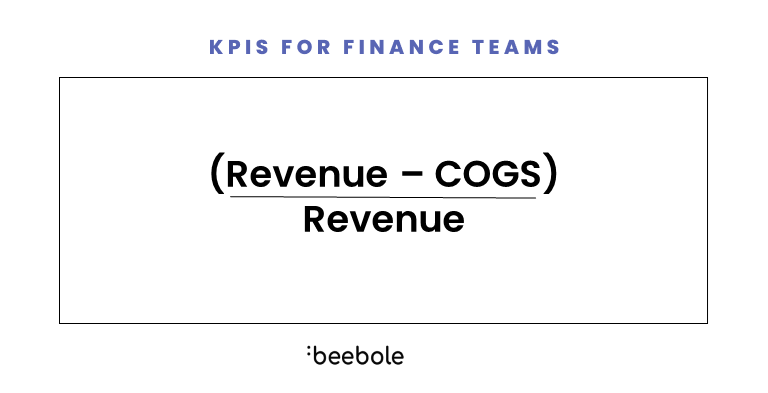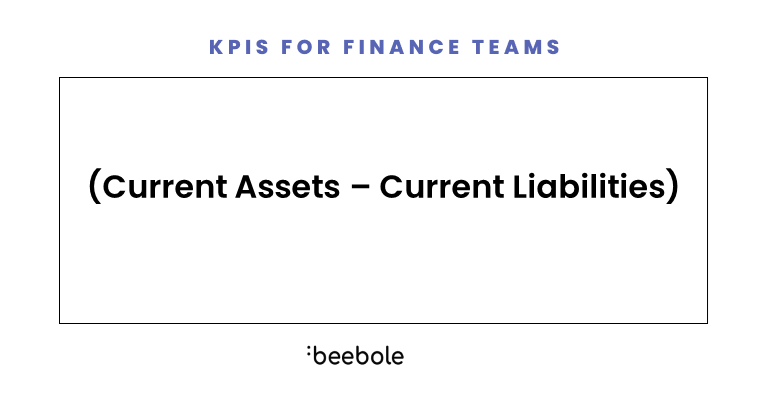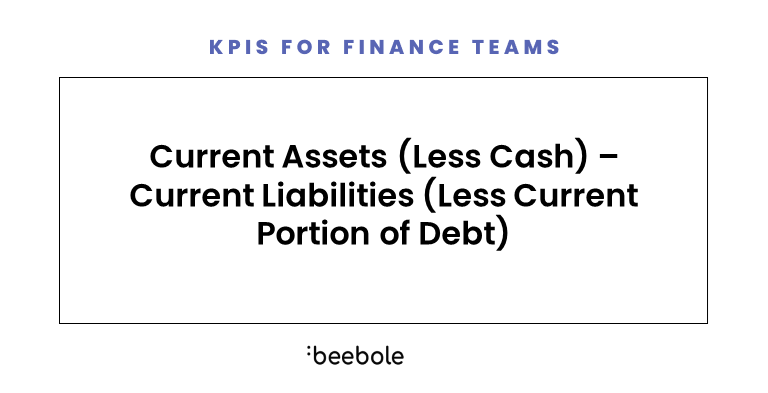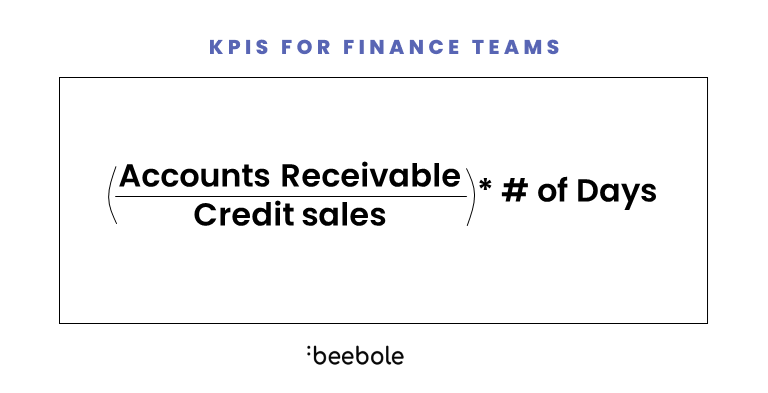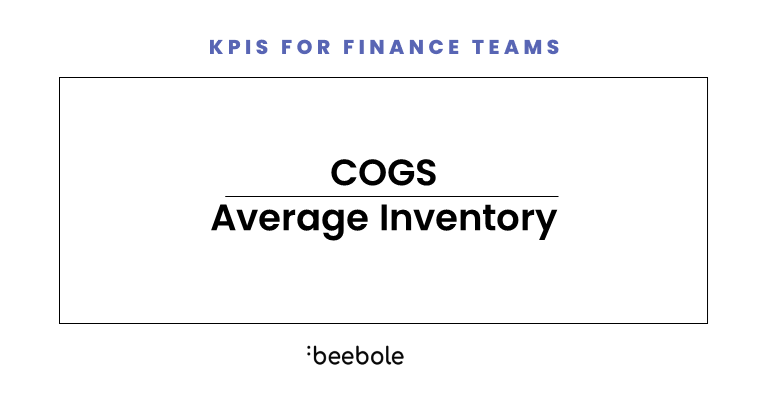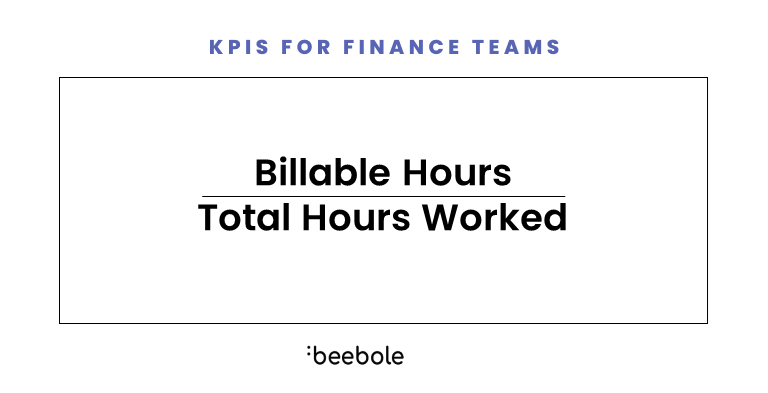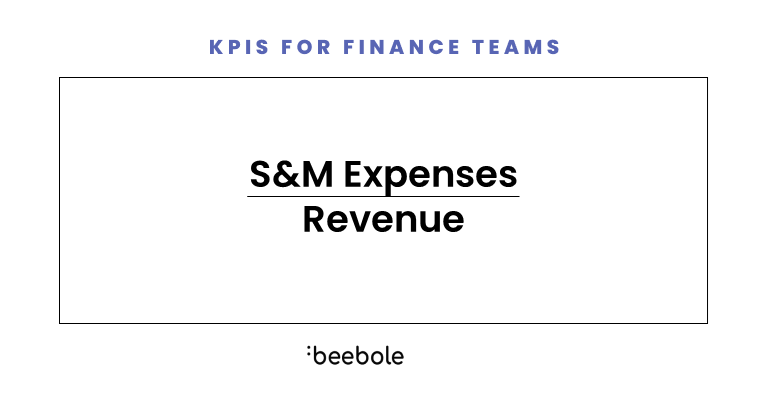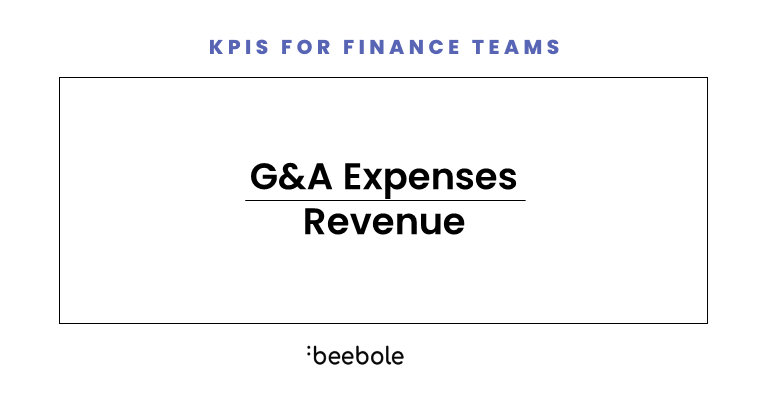Finance Controller KPIs that Every Professional Should Master [The Webinar + The Excel] (Copy)
<link rel="canonical" href= https://beebole.com/blog/finance-controller-kpis" />
Photo by Scott Graham on Unsplash
This post was originally published on Beebole’s Blog: Finance Controller KPIS that Every Professional Should Master [The Webinar + The Excel]"
Key Performance Indicators (KPIs) for finance controllers are some of the most important metrics one can measure to determine company performance. Choose wisely, and get insight into what really makes your business soar. Choose not so wisely, and you’ll likely feel confused and lost, weighed down by metrics overload. That’s precisely why I chose to dive into this topic. I’ve worked in various industries and have seen first-hand what happens when finance KPIs go wrong. I want to show you my take on the reporting KPIs that every financial controller and FP&A should master, why they matter, and the formulas behind each one. Keep scrolling to watch the recording of the webinar I did on this topic, as well as download the Excel file I created with each and every KPI formula mentioned.
According to Investopedia, “KPIs refer to a set of quantifiable measurements used to gauge a company’s overall long-term performance.” In other words, KPIs are more than normal metrics because they provide insight into actual company success and financial performance. And while key business metrics vary from company to company, there is one thing true for all KPIs: They are key to understanding the performance of the business. Let’s take this for example: If I’m running a marathon, a key metric would be pace of miles per minute, as that will tell me how I am performing. The number of participants for the day’s event, or the day’s top temperature, for example, would have little insight into my performance. If we shift that to a business example, a key metric could be Net Promoter score or news sales per day.
How to Choose the Right Financial KPIs
When it comes to selecting your KPIs for the finance department, here’s what I consider to be most important.
Be strategic: The metrics you select as KPIs should align with your overarching strategy at a corporate level. If your strategy is to be the price leader in your market, for example, then one of your KPIs should track efficiency at keeping costs down.
Don’t overdo it: Studies show that our short-term memory can recall seven items on average, give or take two. This is often referred to as Miller’s Law. This serves as a good rule of thumb for the number of KPIs to have. It needs to be few enough that people can remember them.
Make sure it’s measurable: This might seem obvious, but be sure to make your chosen finance KPIs measurable. If you can’t measure, quantify, and track it, you should select another metric as a KPI until you can measure it.
Ensure it’s actionable: If a KPI is not actionable it shouldn’t be on your list. Let me explain. Imagine business is heavily dependent on earthquakes. This might be key to your business, but given you can’t influence when an earthquake happens, it shouldn’t be a KPI as it’s not actionable.
Set a target: Each KPI should have a target that you track to assess your performance against the KPI. If you’re measuring Customer Lifetime Value (LTV), it’s crucial to establish your goal and track your metric against said target.
Watch My Presentation on the KPIs Every Financial Controller & FP&A Should Master [WEBINAR RECORDING]
I’d love for you to watch my webinar on the finance KPIs every FP&A and finance controller should master. Here’s a quick overview of everything I cover:
✔️ Which finance KPIs make the most sense to track and why
🎯 How the right KPIs can help you create a data-informed strategy
➗ The “math” behind the metrics
📈 The necessary groundwork to create a financial dashboard YouTube embed
A Deeper Look at Finance Controller KPIs
Each department and team within a business should have their own KPIs to help them gauge their progress and success, but for the rest of this article, I want to focus on financial KPI examples for finance teams and finance operations. My list includes common and important financial metrics, but whether they are a KPI for you depends on your business’ goals, strategy, and what helps you best understand and influence it.
Remember: You can get a free copy of my Excel file with all of these KPIs and formulas here.
Margin: A Common Finance Metric to Measure General Health
One of the most common financial metrics that companies track is margin. Margins are a quick and easy way to assess the general health of the business by taking a deeper look at some profit metrics. Many companies will benchmark the margins they earn against competitors and industry standards to see how they are performing relative to the competition. What margins a business considers a KPI vs. a metric will vary by business. Three common margins that business track include:
Gross Profit Margin
This measures your profit margin after subtracting out all Cost of Goods Sold (COGS). This margin helps you understand how much profit you have left to pay operating and non-operating expenses.
Use Case
The more cost of goods sold, the more closely you will monitor gross profit margin. For example, car dealerships have very low gross profit margins as they are only a reseller of the car; this means that monitoring this can be very important as a 1% or 2% improvement in gross margins can make a big difference on the bottom line.
Net Profit Margin
This metric measures your profit margin after subtracting out all expenses. This is a common profitability measure that is included in all standard P&L statements.
Use Case
The net profit margin is often used as a way to benchmark and compare your margins against other companies in your industry. Understanding your net margins compared to competitors can be particularly helpful in an industry with high pricing pressures. Having a higher margin than your competitors may make you more willing to engage in discounting and other pricing measures to maintain market share.
EBITDA Margin
This measures your margin for Earnings Before Interest Taxes Depreciation and Amortization.
Use Case
EBITDA margin is most commonly tracked in private equity and VC-backed companies. Buying companies on a multiple of EBITDA is common practice; the higher a company’s EBITDA and EBITDA margin, the more likely the company will be able to charge a premium at time of sale. In the SaaS industry, a company metric is the rule of 40 which says annual revenue growth combined with EBITDA profit margin should be above 40%.
Liquidity: A Finance Metric Related to Payment Obligations
Liquidity metrics are another great example of finance manager KPIs. They are used to understand the financial health of a business when it comes to paying its obligations. These ratios are important for understanding how long a business can meet its obligations with the cash and other short-term assets they have. These metrics are very important to lenders and creditors.
Working Capital
This measures the capital that a business uses for its day-to-day operations. A positive working capital implies you are able to fund your day-to-day operations, while a negative working capital is a sign that you can’t fund your operations from the business. A negative working capital means you’ll either need to become more efficient or to raise capital to meet your working capital needs.
Use Case
Working capital is a common measure that all businesses manage, but it becomes particularly important in situations where businesses are either in high growth or in financial distress. In these situations businesses often struggle maintaining enough working capital to operate the business on a day-to-day basis and therefore should be tracking working capital very closely.
Net Working Capital
This measures a company’s liquidity and is similar to working capital, but it excludes cash and debt from the equation. It is another way to measure if a company is able to fund its operations through the business, or if it will need to raise cash to fund operations.
Use Case
Net working capital is similar to working capital, and will more commonly be measured in high growth and situations of financial distress. For some industries who have raised a lot of capital and have a lot of cash on hand or a large amount of debt coming due, looking at NWC is more beneficial than WC. If a company just did an IPO, it would make sense to use NWC as the cash raised from the IPO is not related to the day-to-day operations of the business, but rather a one-time financial transaction.
Quick Ratio
Quick ratio is used to measure a company’s ability to meet short-term obligations with its current assets. The measure excludes inventory as inventory cannot quickly be turned into cash. The higher the ratio, the more stable the company is, and it implies that a company can easily meet its current obligations if it has a high quick ratio.
Use Case
The quick ratio is a common measure for companies with inventory. If I were measuring a retail store’s liquidity, I would exclude the inventory as it would take time to convert the inventory into cash, and in most cases could not be used to pay day-to-day operating expenses if needed. Lenders pay particularly close attention to this and other liquidity ratios. This measure is often tracked more closely by companies who are actively working with or looking to work with lenders.
Current Ratio
A current ratio is used to measure a company’s ability to meet short-term obligations with its current assets. The measure includes inventory, unlike the quick ratio which excludes inventory. The current ratio is another way to measure how many times a company can cover its operating liabilities with short-term assets, but in this case, inventory is included. The reason the quick ratio was created is because inventory is often difficult to convert into cash if needed to pay current liabilities.
Use Case
The current ratio is commonly used for companies that do not have much in the way of inventory. For example, a software-based business would use the current ratio to understand liquidity. This ratio is particularly important for businesses who have concerns about meeting short term operating requirements. Companies looking to fund growth through loans will often track the current and quick ratio more closely because banks want to see strong ratios before lending funds.
Efficiency: Better Understand How Efficient Your Company Is
Efficiency financial metrics help one understand how efficient the company is at converting inventory and credit sales into cash, and how efficient they are at paying bills. Companies who are able to get customers to pay them quicker and turn the inventory over on a more regular basis are generally more financially healthy and efficient than businesses that can’t do this. Which metric is a KPI will vary by business. For example, Inventory Turnover might be the key metric for a grocery store business, while on the other hand, a furniture store might be concerned about DSO and/or AR turnover.
Days Sales Outstanding
Days Sales Outstanding (DSO) is a measure to see how long it takes a company to convert sales into cash. The longer the DSO, the longer it takes a business to receive cash for selling its product.
Use Case
The DSO metrics services as a warning sign and should be tracked over time. If you see an increase in DSO, it’s a sign you are having trouble getting paid by your customers. Companies that extend credit to customers should more closely track DSO than other companies.
Accounts Receivable (A/R) Turnover Ratio
Accounts Receivable Turnover Ratio is a measure that shows how effective a company is at collecting receivables. The higher the A/R ratio, the more efficient one is at turning over (collecting) its A/R balance.
Use Case
Accounts Payable turnover is a ratio every company should track, but the companies who should track it most closely are those who have room for improvement. If you are paying all of your vendors immediately and not getting a discount for it, you are being inefficient. If you pay on average 15 days and your vendors allow 60 days you are missing out on earning interest on that cash for 45 days which can be material.
Inventory Turnover Ratio
The Inventory Turnover Ratio shows how often a company has turned over its inventory during a certain period.
Use Case
Inventory ratio is a metric that is monitored particularly closely in the retail industry. In retail, too low of an inventory turnover implies that you are not selling enough, and too high of an inventory turnover could imply you are not purchasing enough and could often be missing out on sales.
Employee Productivity: The Importance of Measuring Where Your Team’s Time (and Resources) Go
Employee productivity metrics are focused on understanding how productive your employees are, and require both financial and time tracking software. One employee productivity metric is billable hours, which are hours billed over total hours worked. This metric is quite common in consulting and service firms, where one of the key drivers of the business is the number of billable hours for each employee. A second metric is Project Utilization Ratio, which helps management understand how many hours are spent on each project. This metric allows management to ensure time is spent on the most important activities based on the strategic goals of the company.
Billable Hours Ratio
This ratio is used for companies that have employees that have their time billed out for various projects, and it shows what percentage of time is billable.
Use Case
This metric is particularly useful for consulting and professional service-based businesses that bill their clients based on the number of hours an employee works on a project. In this type of environment understanding the billable hours is critical as a service companies lifeblood resolves around how many hours employees are able to bill to their clients.
Project Utilization Ratio
This is a measure of how much of an employee’s time is spent on certain projects. This ratio is helpful in understanding how much time is spent on different projects.
Use Case
This metric becomes particularly important when you want to ensure that key projects are being dedicated the necessary time to complete them. Imagine a company going through a modernization effort that is critical to the success of the company long-term. In this situation. you might have the Project Utilization Ratio front and center as you want to make sure employees are spending a large percentage of time on these key projects.
Expense: Finance Metrics to Ensure You Optimize Every Dollar Spent
Expense ratios are a common metric to track as it allows finance controllers to see how ratios are changing over time, and allows one to track key expense categories against common benchmarks for an industry. Understanding your different expense ratios is very important to ensure you are optimizing every dollar spent.
Sales & Marketing (S&M) Expense Ratio
This measures how much a company is spending on S&M as a percentage of revenue. It shows how much a company spends in S&M as a percentage of total revenue.
Use Case
Tracking S&M spend is something every company should do, but the metric becomes particularly important for sales-led organizations. If your revenue comes directly through your sales team and lead gen marketing efforts, you will want to keep a close eye on S&M expenses. In particular, this is important during the early days of a SaaS company working to scale. If you are not tracking the expenses closely and making sure you have a long-term plan to ensure they reach a healthy ratio, you will be in trouble.
General & Administrative (G&A) Expense Ratio
This measures how much a company is spending on G&A as a percentage of revenue. It shows how much a company spends in G&A as a percentage of total revenue.
Use Case
Tracking G&A spend is something every company should do, but this becomes even more important during restructuring efforts. Often when company expenses are no longer sustainable and profit margins have slumped, they will look much closer at the G&A ratio and track it closely until they are able to see the ratio return to a more sustainable number for the company’s long-term health. I experienced this first-hand as part of a restructuring effort at a company I worked at.
Research & Development (R&D) Expense Ratio
This measures how much a company is spending on R&D as a percentage of revenue. It shows how much a company spends in R&D as a percentage of total revenue.
Use Case
R&D spend is something that will vary a lot by industry. Some of the industries with the highest spend in R&D include industrial, technological, healthcare, and pharmaceutical. If I worked in pharmaceuticals developing drugs, my R&D expense is something I would track very closely as it could easily be my highest operating expense category.
Topline: Why Tracking Revenue is Key to a Healthy Business
Every company tracks topline metrics closely because revenue is key to a healthy business. Every business needs to understand revenue growth rate and information about the customer. How often do my customers leave? What is the lifetime value of my customers? These are all important questions for any business.
Revenue Growth
This measures the growth percentage of revenue between periods.
Use Case
This is one metric that every business tracks regardless of industry. Understanding revenue growth and what is driving your growth or decline is important. If you don’t understand what is happening to your revenue, you can’t develop strategies to change it. Revenue on its own, however, can be viewed as a vanity metric because without an understanding of whether your revenue growth is profitable, you may end up with unsustainable revenue growth in the long run.
Customer Churn
Customer churn is used to measure how many customers left during a certain time period. Many formulas exist for measuring churn as it can be measured on a net or gross basis and in terms of customers lost and dollars lost.
Use Case
Customer churn is an important metric for businesses with repeat customers. Understanding what percentage of your customers leave is key. I worked for a business once that had nearly 30% churn in one year, so we made it a key metric, and I reported on it daily to the General Manager and had a weekly call with the account managers to understand and track this metric.
Customer Lifetime Value (LTV)
This is the amount that a company can expect to earn on average over the lifetime a customer remains with them. The way this is measured will vary by company.
Use Case
This metric is valuable for any company who has repeat customers but is critical to understand for any business that operates a subscription service. The metric was popularized by SaaS businesses and is one of the key metrics every SaaS business tracks to help them understand how much they can spend to acquire a customer and still earn the desired return.


